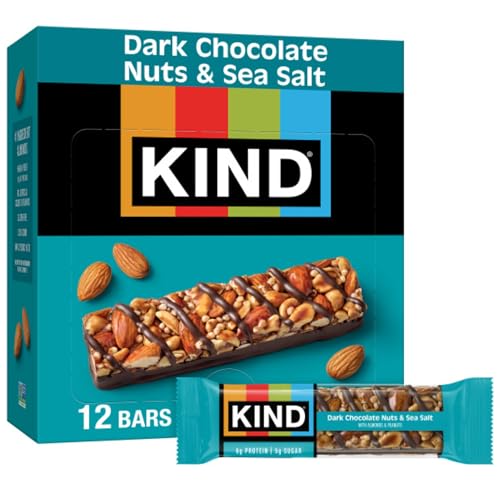This post may contain affiliate links or ads and we may earn a small commission when you click on the links at no additional cost to you. As an Amazon Affiliate, we earn from qualifying purchases. This is at no additional cost to you and helps with our website expenses.
As every seasoned wanderer knows, picking the right gluten-free hiking food is as crucial as choosing the best trails.
Hiking, whether it’s a leisurely stroll through a local nature reserve or an intense multi-day backpacking journey, demands energy, stamina, and a whole lot of grit. The food we take along plays a significant role in sustaining us throughout our adventures.
Why Gluten-Free Hiking Food on the Trail?
If you’re someone who follows a gluten-free diet, it becomes even more essential to choose your hiking foods wisely. Gluten-free hiking food isn’t just about adhering to dietary restrictions.
It’s about providing our bodies with the nutrition needed to conquer those miles.
Understanding the Basics: Macronutrients and the Hiker’s Diet
Macronutrients: The Building Blocks
When planning your hiking food, understanding the basics of nutrition is vital. At the core of our diet are macronutrients – proteins, fats, and carbohydrates – each of which plays a critical role:
- Proteins: They are the building blocks of our body, helping in muscle repair and growth, which is particularly important after a strenuous hike.
- Fats: High in calories, fats serve as a long-lasting source of energy. Plus, they help with the absorption of certain vitamins.
- Carbohydrates: As our body’s preferred energy source, carbs can be quickly converted into glucose to give you that much-needed energy boost during your hike.
The Unique Nutritional Needs of Hikers
Hikers, especially those heading out for long or particularly strenuous treks, have some specific nutritional needs. Hiking, as a form of intense physical activity, increases your body’s demand for energy.
Therefore, you need more calories than usual to fuel your body. Depending on the intensity of your hike, you may need anywhere from 2,500 to 4,500 calories per day.
Hiking also causes you to sweat, leading to loss of electrolytes (such as sodium and potassium) that are essential for muscle function and maintaining fluid balance. Hence, incorporating foods with these nutrients is important.
The Advantages of Going Gluten-Free
For those following a gluten-free diet, or even those interested in exploring this lifestyle, choosing gluten-free hiking foods comes with several benefits:
- Digestibility: Gluten-free foods are often easier on the stomach, especially for those with gluten intolerance or sensitivity. This can be a boon during a hike, helping to prevent digestive discomfort.
- Variety: Gluten-free foods offer a wide range of options, from fruits and vegetables to meat, fish, dairy, and many grain varieties, ensuring a well-rounded diet.
- Energy Efficiency: Many gluten-free foods, like nuts, seeds, and lean meats, are energy-dense, meaning they provide a lot of energy (calories) relative to their weight – an essential factor to consider when you have to carry your food.
Tips for Selecting Gluten-Free Foods for Hiking
Weight, Perishability, and Preparation Time
When choosing your gluten-free hiking food, several factors need to be taken into account:
- Weight: Since you’ll be carrying your food, it should be as lightweight as possible. Opt for foods that are energy-dense, providing a lot of calories relative to their weight.
- Perishability: Foods that spoil quickly may not be the best choice for hikes, especially long ones. Non-perishable foods like nuts, dried fruits, and canned goods are better options.
- Preparation Time: On a hiking trip, you might not have the time or resources to prepare complex meals. Choose foods that are easy to prepare, require minimal cooking, or can be eaten as-is.
Naturally Gluten-Free Vs. Certified Gluten-Free
While picking gluten-free foods, you’ll encounter two types: naturally gluten-free foods and certified gluten-free products.
Naturally gluten-free foods are those that do not naturally contain gluten, like fruits, vegetables, meat, fish, dairy, and certain grains (like quinoa and rice).
Certified gluten-free products are processed foods that have been tested and certified to contain less than a certain amount of gluten.
While both are suitable for a gluten-free diet, it’s essential to read labels carefully, especially for processed foods, as they can sometimes contain hidden sources of gluten.
Nutritional Value and Hidden Sources of Gluten
Lastly, always check the nutritional value of your chosen food. Make sure it provides you with the necessary macronutrients – proteins, fats, and carbohydrates.
Also, remember to check for hidden sources of gluten, which can be found in additives like food starches, malt, and certain food colorings.
Gluten-free food selection can seem daunting initially, but with a bit of knowledge and practice, it becomes a simple part of your hiking preparation.
Gluten-Free Hiking Food: Top Product Recommendations
Hiking is a demanding activity, and while nature offers its scenic rewards, your body needs fuel to keep going. Here, we’ve listed some gluten-free products that not only satisfy your hunger but also offer good nutritional value:
- Protein Bars: Look for gluten-free protein bars like Kind Bars or RXBARs. They’re lightweight, easy to carry, and packed with protein to keep you energized.
- Gluten-Free Jerky: A perfect source of high-quality protein. Brands like Chomps and The New Primal offer gluten-free beef and turkey jerky.
- Nuts and Seeds: Almonds, peanuts, sunflower seeds, and chia seeds are all high in energy and naturally gluten-free. Pre-packaged options like Sahale Snacks offer a variety of flavored nut mixes.
- Dried Fruits: Dried fruits like raisins, apricots, or apples provide a quick energy boost. Just be sure to check the packaging for any added gluten-containing ingredients.
- Gluten-Free Crackers or Rice Cakes: Perfect for a quick snack or to pair with nut butter. Brands like Mary’s Gone Crackers and Lundberg Family Farms offer a variety of gluten-free options.
- Nut Butters: High in protein and healthy fats, single-serving packs of almond or peanut butter, such as Justin’s, are convenient for hiking.
- Gluten-Free Oats: A hearty breakfast option or a filling snack, brands like Bob’s Red Mill and Glutenfreeda offer certified gluten-free oats.
- Gluten-Free Meal Pouches: Brands like Good To-Go and Wild Zora offer gluten-free meal options, which can be easily prepared by adding hot water.
DIY Gluten-Free Trail Food Ideas
While pre-packaged foods are convenient, there’s something rewarding about preparing your own hiking food. Here are a few simple, gluten-free ideas you can make at home:
1. Energy-Packed Trail Mix:
Making your own trail mix gives you the freedom to add in your favorite ingredients. Here’s a simple recipe:
- 1 cup of unsalted almonds
- 1 cup of dried cranberries
- 1/2 cup of dark chocolate chips (ensure they’re gluten-free)
- 1/2 cup of sunflower seeds
Mix all the ingredients and store in a zip-lock bag. This trail mix gives you a balance of protein, fats, and carbohydrates for sustained energy on the trail.
2. Gluten-Free Energy Balls:
Energy balls are easy to make, portable, and can be packed with high-energy ingredients. Here’s a recipe to try:
- 2 cups of gluten-free oats
- 1 cup of peanut butter
- 1/2 cup of honey
- 1/2 cup of dried fruit (like raisins or chopped dates)
- 1/2 cup of chocolate chips
Combine all ingredients in a bowl, roll into balls, and refrigerate overnight. Pack a few in a small container for your hike.
3. Homemade Gluten-Free Jerky:
Making your own jerky allows you to control the ingredients and flavor. There are many recipes available online. Just ensure to use gluten-free soy sauce or tamari.
4. Gluten-Free Muesli:
A mix of gluten-free oats, dried fruit, nuts, and seeds make a satisfying breakfast or snack. Pack some in a zip-lock bag and add water or a dairy-free milk substitute when you’re ready to eat.
These are just a few DIY gluten-free hiking food ideas. Feel free to get creative and adjust based on your preference and dietary needs.
Adapting Your Gluten-Free Hiking Food to Different Climates and Regions
When it comes to hiking, the climate and specific region can significantly impact your food choices. Here are a few tips on how to adapt your gluten-free hiking food to different environments:
1. Warm Climates:
In warmer climates, your body will lose more fluids through sweat, and the risk of food spoilage increases. Here’s what to keep in mind:
- Hydrate: Ensure you’re drinking plenty of water and replenishing lost electrolytes. Pack electrolyte powders or tablets that are gluten-free, like Nuun Sport or Ultima Replenisher.
- Avoid perishable foods: Foods that can spoil easily, like certain dairy products, may not be the best choice. Opt for more stable options like nuts, seeds, and dried fruits.
- Pack light, high-energy foods: Warm temperatures can decrease appetite, so pack foods that are light but energy-dense, such as gluten-free energy bars or trail mix.
2. Cold Climates:
In colder climates, your body uses more energy to stay warm, and food generally stays good for longer. Here are some suggestions:
- Increase your calorie intake: Your body will need more fuel, so increase your intake of high-calorie foods. Nuts and seeds, gluten-free jerky, and nut butters are excellent choices.
- Hot meals and drinks: Gluten-free hot cereal or hot cocoa can provide not only nourishment but also much-needed warmth. Brands like Bob’s Red Mill and Swiss Miss offer gluten-free options.
3. Specific Regions:
Sometimes the region of your hike may dictate specific food choices, based on availability or local dietary habits. For example, if you’re hiking in coastal areas, you might have access to fresh seafood, which is naturally gluten-free.
In more remote or international locations, it might be beneficial to bring more of your own gluten-free food to ensure availability.
Being mindful of the climate and region can help you plan and pack your gluten-free hiking food more efficiently, ensuring you have the right nutrition to power your adventure.
Wrapping Up Gluten Free Hiking Food
Whether you’re an experienced hiker or a beginner, whether you’re on a gluten-free diet or just exploring the possibilities, remember that the food you pack can significantly influence your hiking experience.
Choosing the right gluten-free hiking food means you’re not just catering to dietary preferences or needs, but also ensuring your body gets the fuel it requires to enjoy and complete your adventure.
So the next time you lace up your hiking boots and adjust your backpack, remember to pack in not just your essentials but also your gluten-free food supplies. After all, every great hike is powered by great nutrition.















